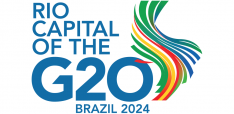Digital Diplomacy as a Tool for Contesting Reality

llan Manor examines digital diplomats’ ability to reach new audiences and construct competing versions of reality.
In 1987, James Der Derian conceptualized diplomacy as the mediation of estrangement. Early on, digital diplomacy was conceptualized in a similar manner. Rotted in the effort to practice public diplomacy, the adoption of social media by ministries of foreign affairs (MFAs) was seen as means toward fostering relationships with foreign populations. Through Facebook and Twitter, diplomats could converse with connected publics so as to explain their nations' foreign policies, highlight shared norms and values and respond to online criticism.
Even more importantly, social media was seen as a tool for overcoming the limitations of traditional diplomacy. Such was the case with Virtual Embassy Iran, a web based platform launched by the State Department in 2011. The virtual embassy was meant to facilitate interactions between US diplomats and Iranian citizens even though the two nations had no diplomatic ties. Similarly, in 2015 Israel launched a Twitter based embassy to the Gulf States with the hope of creating bridges with Arab and Muslim social media users. At the same time, the Palestinian Authority launched a Facebook page dedicated to interacting with Israeli citizens. Such communication is rare given that Palestine has no official representation in Israel.
However, over the past two years digital diplomacy has become increasingly utilized for strategic communication. MFAs now seek to formulate narratives through which they can frame their nations' actions, the actions of other actors and solutions to global crises. Notably, the goal of strategic communication is not relationship building, or the mediation of estrangement, but influencing how online publics understand the world around them. Strategic communication is thus used to target specific publics and deliver messages that are likely to resonate with those publics based on their values, interests, global outlook, political affiliation and national history.
One recent example of strategic communication is the "UK Against Daesh" Twitter account meant to publicize the UK's progress in fighting Daesh. The British Foreign Office preferred Twitter to Facebook as this is the medium of choice of elites such as journalists, opinion makers and other diplomatic institutions. Tweets published on the account depict rebuilding efforts in liberated Iraqi cities, UK aid to survivors of sexual violence and the training of Iraqi soldiers and security forces. All of these suggest to followers that unlike the invasion of Iraq in 2003, the UK is committed to working with the Iraqi government, and with Iraqi communities, towards a better future.
While the UK's Twitter channel seems relatively harmless, the turn towards strategic communication has effectively led to the fragmentation of reality and contestation of reality by diplomatic actors. For instance, during the first two months of the Crimean crisis, the Russian government, and Russian digital diplomacy, stated that there were no Russian troops in Ukraine while the US argued the opposite. Once Russia admitted it had forces in the area, it portrayed its actions as an attempt to safeguard the lives of Russian minorities coming under threat from Ukrainian Neo-Nazis. The US, and its allies, alleged that no such Neo-Nazis existed and portrayed Russia's actions as the invasion of another sovereign state. Social media users were thus faced with two conflicting realities.
Since 2015, the contestation of reality through digital diplomacy channels has become more widespread. According to Russian digital diplomacy, the Republic of Crimea exists as a part of the Russian Federation. According to US social media accounts, there is no such place. Similarly, Russian social media accounts argue that Aleppo and Syria have been liberated from terrorists while according to the UK both Aleppo and Syria have been reduced to rubble by Syrian and Russian forces. What confounds this discrepancy is the use of images by each side to prove its argument. While the UK exhibits the rubble of Aleppo, Russia Tweets from Christmas celebrations in a liberated city. Given that "seeing is believing", contesting reality through images is even more powerful.
Presently, the Republic of Crimea exists and does not exist simultaneously while Syria is bombarded and liberated simultaneously. Elsewhere on social media, Turkey has both strengthened its democracy and fallen under totalitarian rule; ISIS has both established a Caliphate in Syria and Iraq and has failed to so while Iran has both met its commitments to the P5+1 and violated them- depending if one follows President Trump or Macron online. In this manner, diplomats and foreign ministries now fragment and contest reality.
The question that follows is why is this process so problematic? First, diplomacy cannot function in a world without reality. Countries cannot recognize a semi-existing Republic nor can they diffuse tensions if a crisis both exists and does not exist. The North Korean debates at the UN demonstrate that bilateral and multilateral diplomacy necessitates a minimal shared definition of reality. Second, contested realities contribute to the sense of instability and confusion now felt by people around the world. It is a world that seems more and more out of balance given the proliferation of alternative facts and news. Finally, contestations of reality do the opposite of mediate estrangement- they contribute to estrangement by alleging that one side is hiding information, or manipulating public opinion or conspiring by hiding its true actions. Thus, social media comes to undermine relationships rather than facilitates them.
Digital diplomacy can be a powerful tool for building bridges and fostering under-stating between peoples and governments but only if used to that end. The more diplomats will contests reality, the more diplomacy will fail to contend with presents and future challenges.
llan Manor is a PhD candidate at the University of Oxford and a member of the Oxford Digital Diplomacy Research Group. His recent monograph on Digital Diplomacy has been published by Brill. He blogs at www.digdipblog.com
Photo Credit: Foreign and Commonwealth Office Via Flickr (CC BY 2.0)


